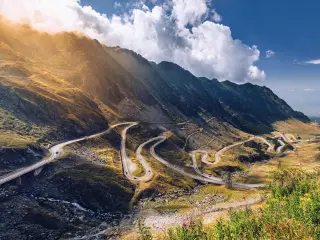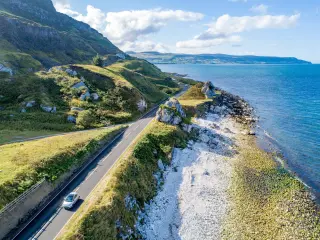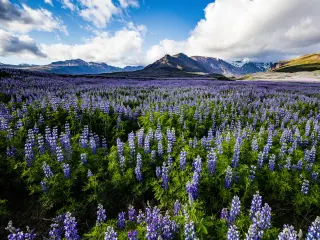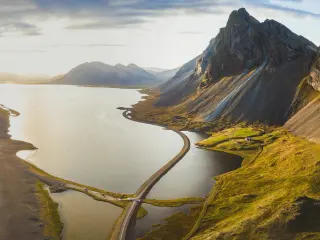How long does it take to drive around Iceland?
Iceland sits in the North Atlantic Ocean, closer to Greenland and the Arctic Circle than its European neighbors. The island is scarcely populated and known as The Land of Fire and Ice, with its incredible wilderness of volcanoes, glaciers, and geysers, where you can relax and unwind in the natural hot springs.
A drive around Iceland on the circular Ring Road takes 15 hours and 40 minutes. The 1,250 km adventure begins close to Reykjavik, the capital city, taking in lava caves, black sand beaches, and many of the volcanoes the island is known for.
Formed by a series of volcanic eruptions around 20 million years ago, a drive around Iceland can seem like you're visiting another planet. Keep on reading to discover the best driving routes for exploring the Island and some of the highlights that make a road trip through this unique Nordic landscape so memorable.
How long does it take to drive around Iceland
| Route | Distance | Travel Time |
|---|---|---|
| The Ring Road | 1,255 km | 15 hours 45 minutes |
| The Ring Road and Golden Circle | 1,345 km | 16 hours 55 minutes |
| The Coastal Loop | 2,525 km | 34 hours |
Whichever route you choose to drive around Iceland, you will encounter stunning coastal views and witness dramatic volcanic landscapes. Most of Iceland's towns, villages, and cities are located in or close to coastal locations.
While this is partly due to fishing and tourism, it is largely due to the central part of the island being uninhabitable.
That being said, you can still visit the remote areas, to witness first-hand the glaciers, volcanoes, and waterfalls that make it such an amazing destination.
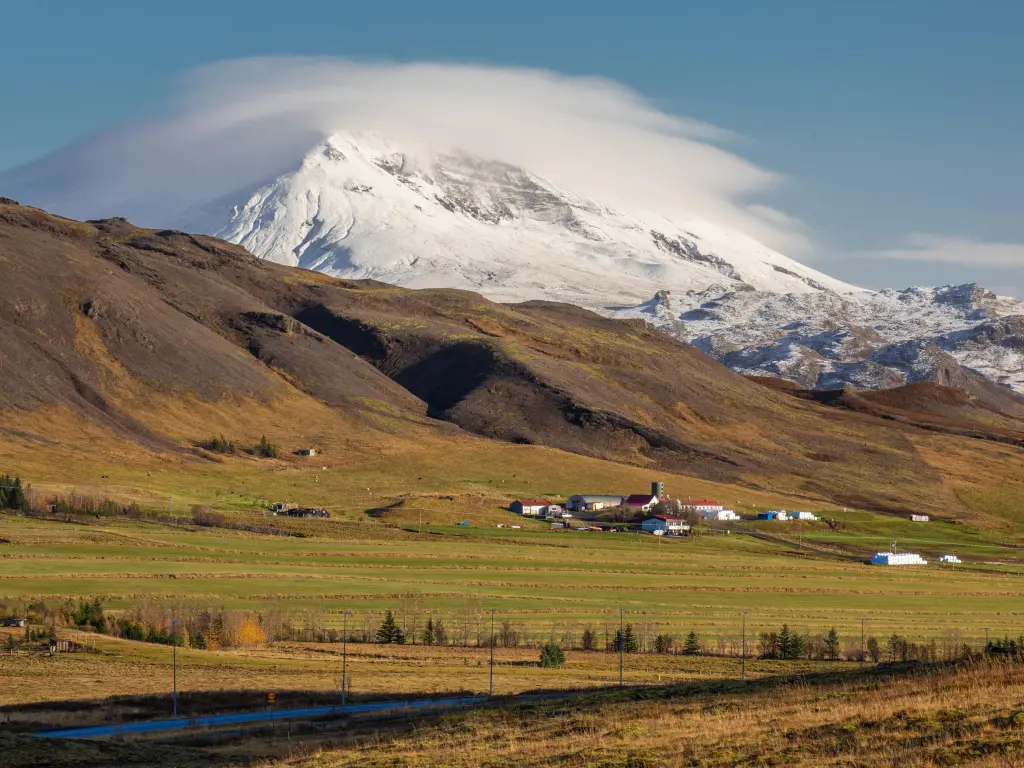
Driving around Iceland on the Ring Road
Our route around Iceland on the Ring Road begins in Mosfellsbær, situated in the southwestern region, close to Reykjavik, the capital city which lies 20 minutes away, in an idyllic coastal position.
Joining the Ring Road, head north along Route 1, through the Hvalfjörður Tunnel and following the coastline. Take the Borgarfjarðarbrú Bridge to Borgarnes, home to The Settlement Center, where you can enjoy the museum's exhibitions and learn all about Iceland before enjoying lunch in the restaurant.
Still following Route 1, head inland past Bifrost and Laugarbakki before arriving at the northern coastal village of Gilja then heading eastwards towards Reykjahlíð on the northern shores of Lake Mývatn,
Here, you'll find the Grjótagjá Cave, an impressive lava cave featured in Game of Thrones with its very own thermal spring.
Leaving Reykjahlíð, continue along Route 1, heading eastwards through the stunningly dramatic landscape and following Highway 95 southwards.
Then take the smaller 939 road, lined with waterfalls as it winds its way along the coastline, before rejoining the Ring Road to Stafafell, just under two-thirds of the way along the route.,
From here the route offers dramatic views of the North Atlantic Ocean as it follows the coastline for over 120 km to the town of Fagurhólsmýri and then arrives at Vikurfjara, a must-see for anyone traveling around the Island with its unique Black Sand Beach.
The route then follows the Ring Road, heading northeast back to Mosfellsbær.
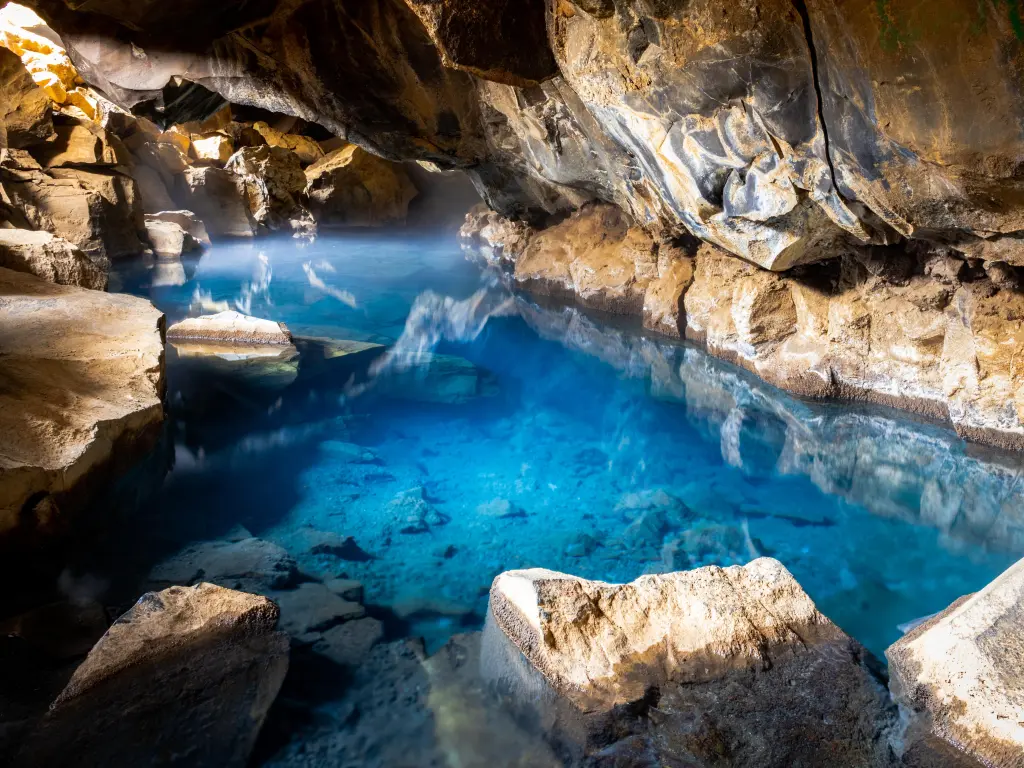
Golden Circle detour on the Ring Road
Our alternative route around Iceland follows the Ring Road in the same way as our main route but includes a detour of the Golden Circle.
After passing Vikurfjara Black Sand Beach and heading northwest, after crossing the Urriðafoss Bridge over the powerfully flowing waters of the Urriðafoss River below, a right turn takes you onto Highway 30, the gateway to the Golden Circle.
The Golden Circle is a 300 km route taking in some of the most popular natural attractions on the Island and Highway 30 takes you inland to the iconic Guilfoss Falls, one of the most impressive and powerful in the country.
The river flows forcefully in two tiers before plummeting over 30 meters into the gorge below. There are various viewpoints where you can witness this jaw-dropping spectacle from many angles.
Back on Highway 35, it is only a 10-minute drive to the Geysir geothermal area in the Haukadalur valley. Strokkur Geysir erupts every 10 minutes sending a column of boiling water skywards reaching over 40 meters.
There are mud pits and hot springs nearby, as well as a hotel, making it a perfect stop-off to spend a night under the northern lights.
Continuing your journey around the Golden Circle, Highway 36 leads you to Thingvellir National Park, one of the largest attractions in the area, and one of the only places on Earth where you can make the incredible walk between continents in the Mid-Atlantic Rift.
The Park is full of fast-flowing rivers, dramatic deep gorges, and steep sheer cliffs. If you are feeling brave, you can swim in one of the ravines filled with Silfra, and this crystal clear water allows visibility underwater of up to 100 meters.
Once you've explored the natural wonders of the Golden Circle, it's a relatively short and straightforward drive along Highway 36 back to the starting point of Mosfellsbær.
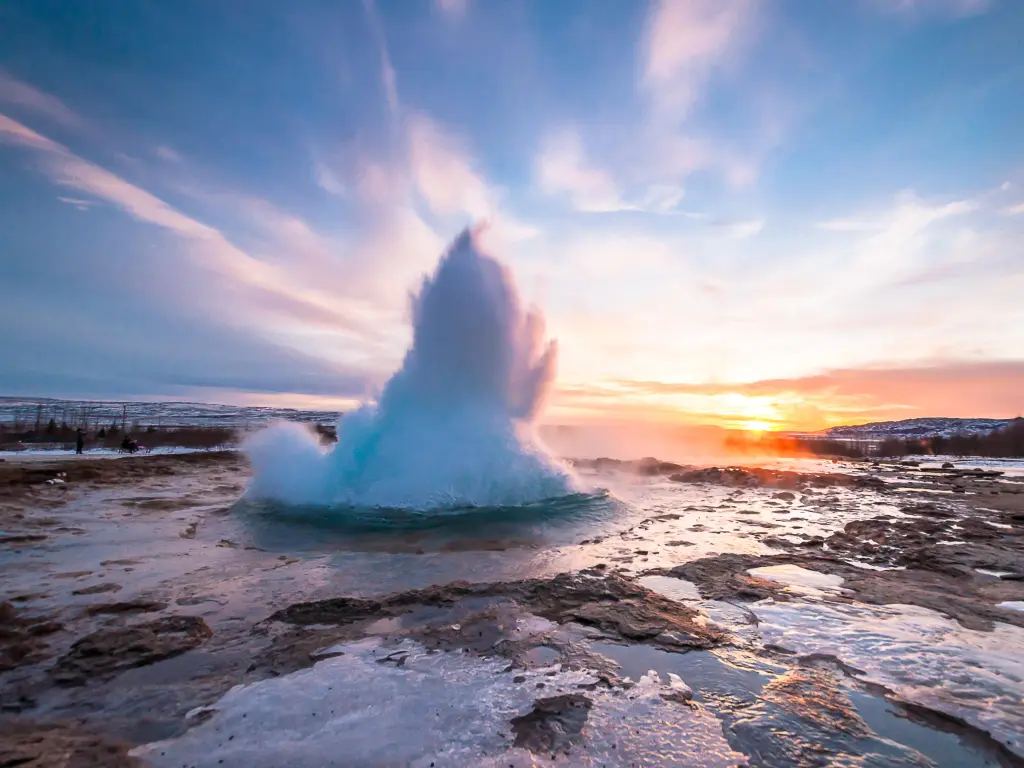
Driving on the Coastal Loop
The Coastal Loop option takes you on a journey along the wonderful and dramatic coastline covering almost the entire coastline of Iceland. Whilst some of the route involves the Ring Road, the route takes you on many of the smaller roads that take you through many of the beautiful villages that line the coastline.
Starting at Mosfellsbær, the route begins by taking the Ring Road north before joining Highway 54 towards the western tip of Iceland and the town of Grundarfjörður. The route then takes you to the northwestern coastline as it winds past Flokalundur and Holmavik along Highway 61 heading south.
The drive along the northern coastline is spectacular, with Ocean views to your left for much of the journey, with impressive views across to Greenland.
You'll then reach the most northerly point on the Island on the Melrakkaslétta peninsula, before heading south along the east coast before rejoining the Ring Road to the south coast.
As you head west across the Island's southern coastline you'll head through Reykjanesfólkvangur on Highway 427. This beautiful 300 sq-km nature reserve has many hiking and walking trails allowing you to visit the amazing lava formations and crater lakes.
Continue along the southwest coast and begin to head north, and Highway 427 takes you around the peninsula to Hafnir and Keflavik before arriving back at Mosfellsbær, completing an incredible 2,520 km adventure.
Things to know that can impact your driving time
A drive around Iceland is an incredible road trip through some of the most awe-inspiring scenery on earth. As it's one of the least densely populated countries in the world, it's unlikely you will encounter heavy traffic, but there are other factors that you should bear in mind when making the trip.
Given its location, close to the Arctic Circle, the weather in Iceland is unpredictable and can change quickly. In the winter months, weather conditions can make driving difficult, and snow and ice along the north and east coasts make the journey difficult at this time of year.
The limited daylight hours during winter are also a major factor, with some areas only getting 2 hours a day, limiting views and your ability to get out and explore. Reykjavik, in winter, can experience only 4 hours of daylight, which is in sharp contrast to the summer months, where it can experience 24 hours a day.
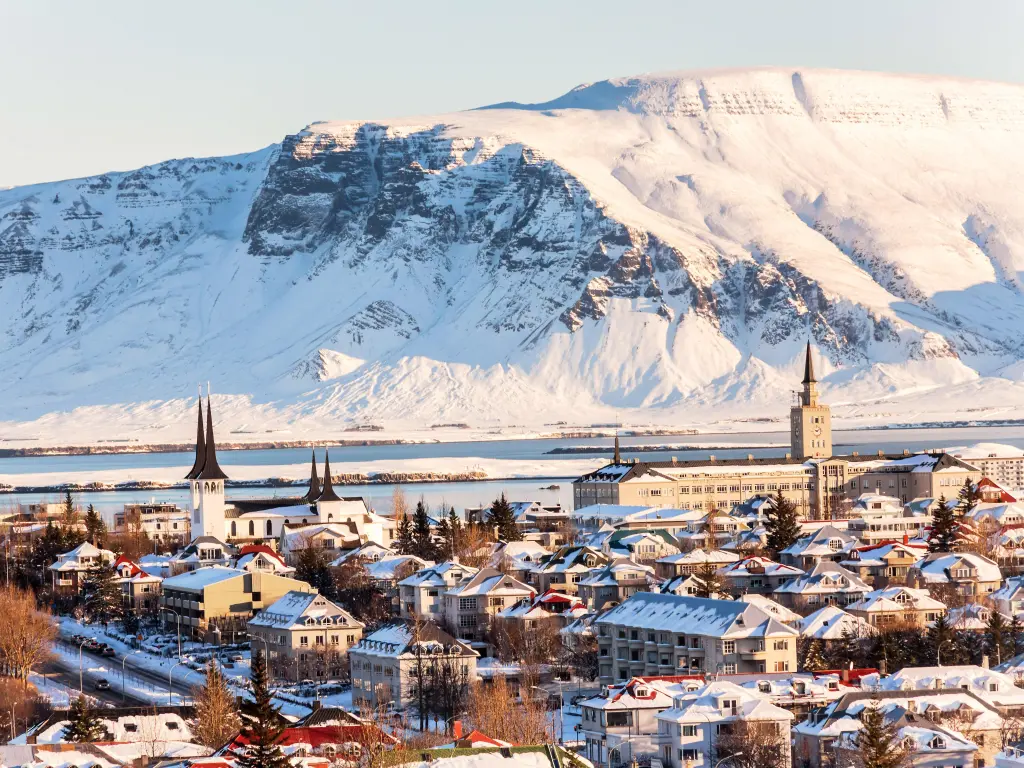
The Island can experience strong winds, especially along the coastal roads, making driving conditions dangerous, especially if you are using a camper or RV. The south and west coasts are more susceptible to high winds due to their exposure to the North Atlantic Ocean.
Heavy rain can also impact your journey time, limiting visibility and causing rising river levels, making some river crossings, and even bridges, impassable. This is particularly true in the south and southeast, in Vik and Hofn.
Coastal fog is also common and can lead to poor visibility so taking the Ring Road in such conditions will be a safer option.
It is essential to be aware of the Island's speed limits and to stick to them. The majority of the main route is on major highways, where the speed limit varies from 30km per hour in residential areas, 50km per hour in urban areas, and 90 km per hour elsewhere.Tips to drive around Iceland in the shortest possible time
Driving around Iceland is a memorable experience you certainly won't want to rush it. But there are a few things to keep in mind that will make your adventure run as smoothly as possible:
- Check the road conditions before setting out. The SafeTravel Iceland application is a great source of up-to-date information.
- Stay on the main roads, going off can often lead to gravel roads that require a 4WD vehicle - If you find yourself on a gravel road, slow down and drive sensibly.
- Have two drivers available so you can alternate and stay fresh.
- Choose an economical car, rather than a gas-guzzler (to minimize refueling stops). On that note, fill up when you can because a drive around Iceland involves a lot of sparsely populated wilderness.
- Use your lights! It's obligatory to use your headlights regardless of the time of day.
- Remember, certain regions only have a few hours of daylight in winter, reducing visibility, and you can't enjoy the stunning scenery in the dark.
- Stock up on snacks and in-car entertainment, to reduce the need for stops and detours.
- While it may seem safe because of the lack of cars, don't stop in the middle or side of the road for photo opportunities.
- Familiarize yourself with the Icelandic road signs to avoid confusion when driving.
Follow our tips and ensure your phone is fully charged before heading out each day in case you encounter any issues or emergencies.
Things to see in Iceland
Whether you are looking for outdoor adventure or a scenic trip taking in the history and culture of the island, then Iceland has it all. Here are some of our favorite things to do to help you plan your trip.
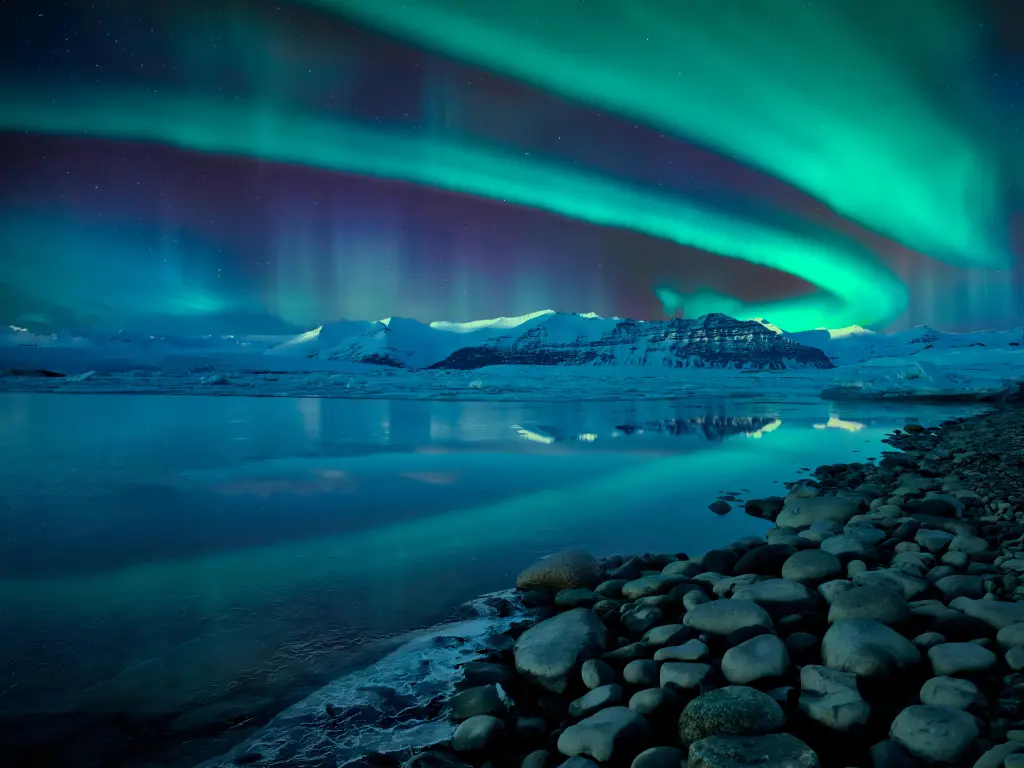
- Seljalandsfoss Waterfall - One of Iceland's most famous waterfalls, Seljalandsfoss allows visitors to walk behind its cascading waters, offering a unique perspective and the opportunity to feel the power of nature up close.
- Jökulsárlón Glacier Lagoon - This vast lagoon at the foot of Vatnajökull Glacier is filled with giant, shimmering icebergs that have broken off from the glacier and float serenely before eventually making their way out to sea.
- Reynisfjara Black Sand Beach - Near the town of Vík, Reynisfjara is a stunning black pebble beach with powerful waves, unique basalt columns, and the picturesque Reynisdrangar sea stacks rising from the ocean.
- Akureyri - Often referred to as the capital of the North, Akureyri is a charming town that offers a mix of urban and natural attractions, including the Akureyri Church, botanical gardens, and nearby geothermal hotspots.
- Mývatn - A geologically active area, Mývatn boasts a diverse range of attractions, from the pseudocraters at Skútustaðagígar to the geothermal Mývatn Nature Baths, providing visitors with both visual beauty and relaxing spa experiences.
With its breathtaking natural beauty, volcanic activity, and geothermal pools, Iceland is a truly unique destination. It's also one of the best places anywhere to witness the Northern Lights, making it a fantastic destination for a road trip.

